 W
WAfter the Software Wars is a book by Keith Curtis about free software and its importance in the computing industry, specifically about its impact on Microsoft and the proprietary software development model.
 W
WAI Superpowers: China, Silicon Valley, and the New World Order is a 2018 non-fiction book by Kai-Fu Lee, an Artificial Intelligence (AI) pioneer, China expert and venture capitalist. Lee previously held executive positions at Apple, then SGI, Microsoft, and Google before creating his own company, Sinovation Ventures.
 W
WAlgorithms + Data Structures = Programs is a 1976 book written by Niklaus Wirth covering some of the fundamental topics of computer programming, particularly that algorithms and data structures are inherently related. For example, if one has a sorted list one will use a search algorithm optimal for sorted lists.
 W
WAlgorithms Unlocked is a book by Thomas H. Cormen about the basic principles and applications of computer algorithms. The book consists of ten chapters, and deals with the topics of searching, sorting, basic graph algorithms, string processing, the fundamentals of cryptography and data compression, and an introduction to the theory of computation.
 W
WAlphabet to E-mail: How Written English Evolved and Where It's Heading (ISBN 0-415-18685-4) is a book by linguist Dr. Naomi Baron, a professor of Linguistics at American University, Washington, D.C.. It was first published in 2000, published by Routledge Press.
 W
WARM System-on-Chip Architecture is a book detailing the system on a chip ARM architecture, as a specific implementation of reduced instruction set computing. It was written by Steve Furber, who co-designed the ARM processor with Sophie Wilson.
 W
WThe Art of Deception is a book by Kevin Mitnick that covers the art of social engineering. Part of the book is composed of real stories and examples of how social engineering can be combined with hacking.
 W
WThe Art of Intrusion: The Real Stories Behind the Exploits of Hackers, Intruders & Deceivers is a book by Kevin Mitnick that is a collection of stories about social engineering as performed by other hackers. Each story ends by summarizing insight into the attack as well as measures to defend against it. The book was published after Mitnick's first book, The Art of Deception, and explores the same themes introduced in the first book.
 W
WThe Art of Unix Programming by Eric S. Raymond is a book about the history and culture of Unix programming from its earliest days in 1969 to 2003 when it was published, covering both genetic derivations such as BSD and conceptual ones such as Linux.
 W
WArtificial Intelligence: A Modern Approach (AIMA) is a university textbook on artificial intelligence, written by Stuart J. Russell and Peter Norvig. It was first published in 1995 and the fourth edition of the book was released 28 April 2020. It is used in over 1400 universities worldwide and has been called "the most popular artificial intelligence textbook in the world". It is considered the standard text in the field of artificial intelligence.
 W
WThe AWK Programming Language is a well-known 1988 book written by Alfred V. Aho, Brian W. Kernighan, and Peter J. Weinberger and published by Addison-Wesley. The book describes the AWK programming language and is the de facto standard for the language, written by its inventors. W. Richard Stevens, author of several UNIX books including Advanced Programming in the Unix Environment, cites the book as one of his favorite technical books. The book is translated to several languages and is cited by many technical papers in the ACM journals.
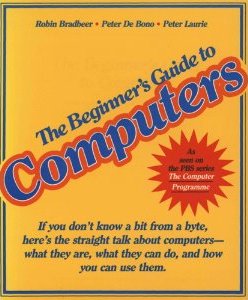 W
WThe Beginner's Guide to Computers is a book about microcomputers and general computing. It was published in 1982 as an accompaniment to the BBC Computer Literacy Project and The Computer Programme.
 W
WC Traps and Pitfalls is a slim computer programming book by former AT&T Corporation researcher and programmer Andrew Koenig, its first edition still in print in 2017, which outlines the many ways in which beginners and even sometimes quite experienced C programmers can write poor, malfunctioning and dangerous source code.
 W
WThe Canadian Internet Handbook was a series of non-fiction books written by Jim Carroll and Rick Broadhead first published in March 1994 aimed at an audience new to computers, describing the basics of how to use the Internet. Books contained information on what the Internet is, how to get connected, how it works, as well as a directory of internet-based services.
 W
WChris Crawford on Game Design (ISBN 0-13-146099-4) is a book about computer and video game design by Chris Crawford. Although referred to as the second edition of The Art of Computer Game Design, it is in fact a completely new book. It was published by Peachpit under the New Riders imprint in 2003. It includes Crawford's response to recent game developments, such as The Sims, and dedicates a chapter to each of his first 14 published games: Tanktics, Legionnaire, Wizard, Energy Czar, Scram, Eastern Front (1941), Gossip, Excalibur, Balance of Power, Patton Versus Rommel, Siboot, The Global Dilemma: Guns & Butter, Balance of the Planet and Patton Strikes Back.
 W
WCode: Version 2.0 is a 2006 book by Harvard law professor Lawrence Lessig which proposes that governments have broad regulatory powers over the Internet. The book is released under a Creative Commons license, CC BY-SA 2.5.
 W
WThe Computer and the Brain is an unfinished book by mathematician John von Neumann, begun shortly before his death and first published in 1958. Von Neumann was an important figure in computer science, and the book discusses how the brain can be viewed as a computing machine. The book is speculative in nature, but von Neumann discusses several important differences between brains and computers of his day, as well as suggesting directions for future research.
 W
WThe Computer Contradictionary is a non-fiction book by Stan Kelly-Bootle that compiles a satirical list of definitions of computer industry terms. It is an example of "cynical lexicography" in the tradition of Ambrose Bierce's The Devil's Dictionary. Rather than offering a factual account of usage, its definitions are largely made up by the author.
 W
WConcepts, Techniques, and Models of Computer Programming is a textbook published in 2004 about general computer programming concepts from MIT Press written by Université catholique de Louvain professor Peter Van Roy and Royal Institute of Technology, Sweden professor Seif Haridi.
 W
WConsent of the Networked: The Worldwide Struggle for Internet Freedom is a book written by Rebecca MacKinnon and released in 2012. It discusses internet censorship and the ways in which companies which manage internet communication are assuming responsibilities formerly held by governments.
 W
WDatabase System Concepts, by Abraham Silberschatz, Henry F. Korth, and S. Sudarshan is a best-selling textbook on database systems.
 W
WDecline and Fall of the American Programmer is a book written by Edward Yourdon in 1992. It was addressed to American programmers and software organizations of the 1990s, warning that they were about to be driven out of business by programmers in other countries who could produce software more cheaply and with higher quality. Yourdon claimed that American software organizations could only retain their edge by using technologies such as ones he described in the book. Yourdon gave examples of how non-American—specifically Indian and Japanese—companies were making use of these technologies to produce high-quality software.
 W
WDigital Retro: The Evolution and Design of the Personal Computer is a coffee table book about the history of home computers and personal computers. It was written by Gordon Laing, a former editor of Personal Computer World magazine and covers the period from 1975 to 1988. Its contents cover home computers, along with some business models and video game consoles, but hardware such as minicomputers and mainframes is excluded.
 W
WDon't Make Me Think is a book by Steve Krug about human–computer interaction and web usability. The book's premise is that a good software program or web site should let users accomplish their intended tasks as easily and directly as possible. Krug points out that people are good at satisficing, or taking the first available solution to their problem, so design should take advantage of this. He frequently cites Amazon.com as an example of a well-designed web site that manages to allow high-quality interaction, even though the web site gets bigger and more complex every day.
 W
WDragnet Nation: A quest for privacy, security, and freedom in a world of relentless surveillance is a 2014 book on Computer and network surveillance by Julia Angwin. The author said that she was motivated to write the book when she learned of data scraping.
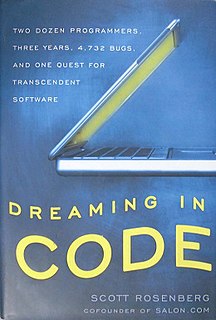 W
WDreaming in Code: Two Dozen Programmers, Three Years, 4,732 Bugs, and One Quest for Transcendent Software is a (2007) Random House literary nonfiction book by Salon.com editor and journalist Scott Rosenberg. It documents the workers of Mitch Kapor's Open Source Applications Foundation as they struggled with collaboration and the software development task of building the open source calendar application Chandler.
 W
WEnterprise Integration Patterns is a book by Gregor Hohpe and Bobby Woolf and describes 65 patterns for the use of enterprise application integration and message-oriented middleware in the form of a pattern language.
 W
WFatal System Error (2010) is a nonfiction work written by Joseph Menn that tells a story of espionage that penetrates the network of international mobsters and hackers who use the Internet to extort money from businesses, steal from tens of millions of consumers, and attack government networks.
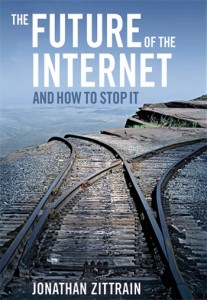 W
WThe Future of the Internet and How to Stop It is a book published in 2008 by Yale University Press and authored by Jonathan Zittrain. The book discusses several legal issues regarding the Internet.
 W
WGoogle Hacks: Tips & Tools for Smarter Searching is a book of tips about Google, a popular Web search engine, by Tara Calishain and Rael Dornfest. It was listed in the New York Times top ten business paperbacks in May 2003, considered at the time to be "unprecedented" for a technology book, and "even rarer" for the topic of search engines. The book was first published by O'Reilly in February 2002. Third edition of the book was released in 2006.
 W
WThe Google Story is a book by David Vise and Mark Malseed that takes an in-depth look who founded the company and why it is unique. Through this book, readers will learn about the founders, the company, and the culture that Google is known for. This book is in English and was published on November 15, 2005.
 W
WHacker Culture is a cultural criticism book written by Douglas Thomas that deals with hacker ethics and hackers.
 W
WHow Google Works is a book co-written by Google's Executive Chairman and ex-CEO Eric Schmidt and former SVP of Products Jonathan Rosenberg. The authors explain how technology has shifted the balance of power from companies to consumers and make the argument that the only way to succeed in this ever-changing landscape is to create superior products and attract a new breed of multifaceted employees, dubbed "smart creatives". The book is in English and was published on 23 September 2014 by Grand Central Publishing, a division of Hachette Book Group. The hardcover version is 304 pages in length. Covering various topics such as corporate culture, strategy, talent, decision-making, communication, innovation, and dealing with disruption, the authors illustrate management maxims with numerous insider anecdotes from Google's history. It became a New York Times bestseller.
 W
WIn The Plex: How Google Thinks, Works, and Shapes Our Lives is a 2011 book by American technology reporter Steven Levy. It covers the growth of the Google company from its academic project origins at Stanford to the company that is rolling in billions of long-tail advertising dollars, forms the central exchange for information on the internet, having by then already grown to 24,000 employees.
 W
WIntroduction to Algorithms is a book on computer programming by Thomas H. Cormen, Charles E. Leiserson, Ronald L. Rivest, and Clifford Stein. The book has been widely used as the textbook for algorithms courses at many universities and is commonly cited as a reference for algorithms in published papers, with over 10,000 citations documented on CiteSeerX. The book sold half a million copies during its first 20 years. Its fame has led to the common use of the abbreviation "CLRS", or, in the first edition, "CLR".
 W
WLecture Notes in Computer Science is a series of computer science books published by Springer Science+Business Media since 1973.
 W
WThe Macintosh Way was the first book written by former Apple evangelist Guy Kawasaki. Subtitled "the art of guerrilla management", the book focused on technology marketing and management and includes many anecdotes culled from Kawasaki's experience during the early development of the Macintosh.
 W
WThe Man Who Invented the Computer is a 2010 historical biography by author Jane Smiley about American physicist John Vincent Atanasoff and the invention of the computer. The book follows Atanasoff as he collaborates with others to develop the Atanasoff-Berry Computer (ABC), the first electronic digital computing device.
 W
WModern Operating Systems is a book written by Andrew Tanenbaum, a version of his book Operating Systems: Design and Implementation. It is now in its 4th edition, published March 2014 (ISBN 0-13-359162-X), written together with Herbert Bos.
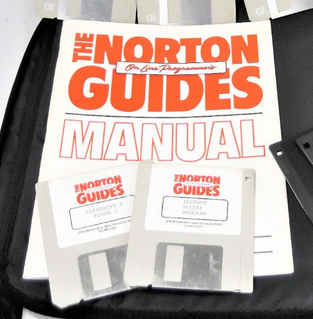 W
WNorton Guides were a product family sold by Peter Norton Computing. The guides were written in 1985 by Warren Woodford for the x86 Assembly Language, C, BASIC, and Forth languages and made available to DOS users via a Terminate and Stay Resident (TSR) program that integrated with programming language editors on IBM PC type computers.
 W
WOnce You're Lucky, Twice You're Good is a book written by Sarah Lacy and published in 2008. It is about some of the most successful companies of Silicon Valley and an in-depth insight into the story behind the founders, including anecdotes and other stories.
 W
WPerl Best Practices is a programming book focusing on standard practices for Perl coding style, encouraging the development of maintainable source code. It was written by Damian Conway and published by O'Reilly.
 W
WThe Perl Cookbook, ISBN 0-596-00313-7, is a book containing solutions to common short tasks in Perl. Each chapter covers a particular topic area and is divided into around a dozen recipes each on a particular problem. Each recipe has four parts: "Problem", "Solution", "Discussion", and "See Also".
 W
WThe Pragmatic Programmer: From Journeyman to Master is a book about computer programming and software engineering, written by Andrew Hunt and David Thomas and published in October 1999. It is used as a textbook in related university courses. It was the first in a series of books under the label The Pragmatic Bookshelf. A second edition, The Pragmatic Programmer: Your Journey to Mastery was released in 2019 for the book's 20th anniversary, with major revisions and new material reflecting changes in the industry over the last twenty years.
 W
WPrinciples of Compiler Design, by Alfred Aho and Jeffrey Ullman, is a classic textbook on compilers for computer programming languages.
 W
WProgramming Languages: Application and Interpretation (PLAI) is a free programming language textbook by Shriram Krishnamurthi. It is in use at over 30 universities, in several high-schools.
 W
WReading the Comments: Likers, Haters, and Manipulators at the Bottom of the Web is a 2015 non-fiction book by Northeastern University professor Joseph M. Reagle Jr.. The book was first published on April 24, 2015 through MIT Press and deals with the subject of Internet comments in locations like YouTube, Amazon, and forums.
 W
WReverse Engineering for Beginners is a textbook written by Dennis Yurichev about reverse engineering. It's available in 9 languages and recommended by several universities.
 W
WReversing: Secrets of Reverse Engineering is a textbook written by Eldad Eilam on the subject of reverse engineering software, mainly within a Microsoft Windows environment. It covers the use of debuggers and other low-level tools for working with binaries. Of particular interest is that it uses OllyDbg in examples, and is therefore one of the few practical, modern books on the subject that uses popular, real-world tools to facilitate learning. The book is designed for independent study and does not contain problem sets, but it is also used as a course book in some university classes.
 W
WRevolution in the Valley: The Insanely Great Story of How the Mac Was Made is a nonfiction book written by Andy Hertzfeld about the birth of the Apple Macintosh personal computer. The author was a core member of the team that built the Macintosh system software and the chief creator of the Mac's radical new user interface software. The book is a collection of anecdotes tracing the development of the Macintosh from a secret project in 1979 through its "triumphant introduction" in 1984. These anecdotes were originally published on the author's Folklore.org web site.
 W
WThe Tao of Programming is a book written in 1987 by Geoffrey James. Written in a tongue-in-cheek style spoof of classic Taoist texts such as the Tao Te Ching and Zhuangzi which belies its serious message, it consists of a series of short anecdotes divided into nine "books":The Silent Void The Ancient Masters Design Coding Maintenance Management Corporate Wisdom Hardware and Software Epilogue
 W
WTurtle Geometry is a college-level math text written by Hal Abelson and Andrea diSessa which aims to engage students in exploring mathematical properties visually via a simple programming language to maneuver the icon of a turtle trailing lines across a personal computer display.
 W
WUbuntu Hacks: Tips & Tools for Exploring, Using, and Tuning Linux is a book of tips about Ubuntu, a popular Linux distribution. The book was published by O'Reilly Media in June 2006 as part of the O'Reilly Hacks series.
 W
WUnderground: Tales of Hacking, Madness and Obsession on the Electronic Frontier is a 1997 book by Suelette Dreyfus, researched by Julian Assange. It describes the exploits of a group of Australian, American, and British black hat hackers during the late 1980s and early 1990s, among them Assange himself.Craig Bowen (nickname), administrator of two important Australian BBS Par, a.k.a. The Parmaster, an American hacker who avoided capture by the United States Secret Service from July 1989 to November 1991 Phoenix, Electron and Nom, who were convicted in the first major Australian trial for computer crimes Pad and Gandalf, the British founders of the notorious 8lgm group the Australian Mendax and Prime Suspect, who managed to penetrate the DDN, NIC and the Nortel internal network, and the phreaker Trax. Together, the three were known as the "International Subversives". Anthrax, another Australian hacker and phreaker
 W
WVersion Control by Example is a book about version control by Eric Sink.
 W
WWeaving the Web: The Original Design and Ultimate Destiny of the World Wide Web by its inventor (1999) is a book written by Tim Berners-Lee describing how the World Wide Web was created and his role in it.
 W
WWhat the Dormouse Said: How the Sixties Counterculture Shaped the Personal Computer Industry, is a 2005 non-fiction book by John Markoff. The book details the history of the personal computer, closely tying the ideologies of the collaboration-driven, World War II-era defense research community to the embryonic cooperatives and psychedelics use of the American counterculture of the 1960s.
 W
WThe Wiki Way: Quick Collaboration on the Web is a 2001 book about wikis by Bo Leuf and Ward Cunningham. It was the first major book published about using wikis. Cunningham is the inventor of wikis, having created WikiWikiWeb, the first wiki website software. The book is about how to install/customize/manage wiki systems, followed by a perspective on the nature of wiki-style online communication.
 W
WWikipedia: The Missing Manual is a 2008 book by John Broughton. It is a how-to guide that explains the process of contributing to the Internet encyclopedia Wikipedia.
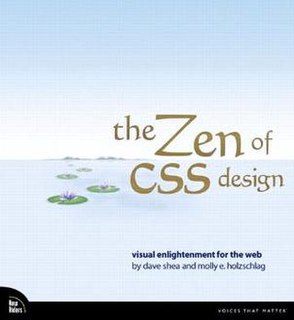 W
WThe Zen of CSS Design: Visual Enlightenment for the Web is a book by web designers Dave Shea and Molly E. Holzschlag, published in 2005. The book is based on 36 designs featured at the CSS Zen Garden resource, an online showcase of CSS-based design. The process that each designer took in coming up with the final design is examined in each case study.